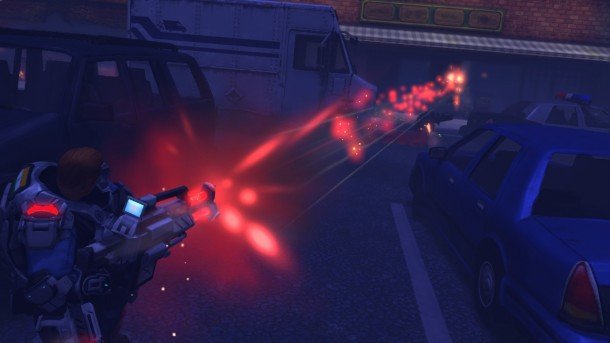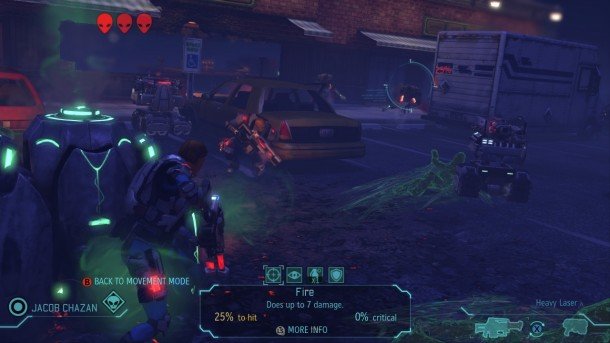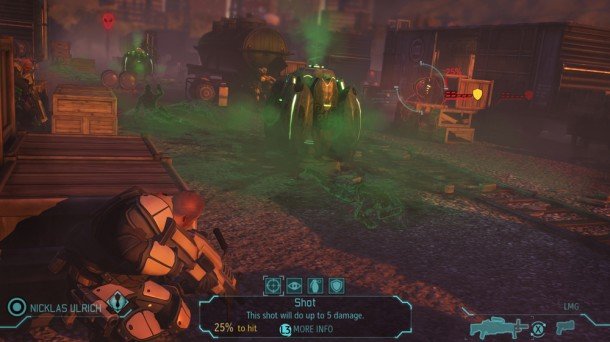XCOM: Enemy Unknown hands-on: classes and difficulty levels detailed

“Because you only have four to six guys, losing any one soldier on a particular mission has pretty serious consequences,” explains Murray. “If you lose two men out of a four-man squad, that's serious business – especially [if you lose] some of those experienced soldiers. Your veterans have very useful skills and perks and are the cornerstone of your tactical game, and if you lose those guys that's pretty serious.”
With smaller team sizes comes greater emphasis on the interoperation of their different classes, too. “You've got four different classes of soldier in XCOM. You've got a heavy weapons specialist: he's got a machine gun and a rocket launcher. He's going to solve big problems with big tools. You've got a sniper: he can sit up on a mountaintop like Zeus and hurl thunderbolts at people or bushwhack through the weeds and get in position for that perfect shot. You've also got assault soldiers, who are the masters of closequarters combat; they can take a tonne of damage and they can dish a tonne out at close range. And the last class is the support soldier – he's a guy who can fill a whole bunch of roles on the battlefield, from medic to jack-of-all-trades.”
Needless to say, with their roles so defined, just one dead teammate means a gigantic hole in your tactical operation. With your range of expertise weakened, it's very easy to then lose control of a situation entirely – at least, it is on the harder difficulty settings. XCOM has made some concessions to the broader gaming audience: lower difficulties come with lower lethality, additional telemetry and tool-tips. Classic difficulty, meanwhile, aims to recreate the austere challenge of the original game.
“On classic difficulty, we make it very hard for you,” says Murray. “On some of the easier difficulty levels, we want you to succeed. On normal difficulty – I will admit, that's plenty of challenge for me.”

While it is disheartening to see Earth's elite soldiers getting melted into sticky puddles by a single shot of plasma, Murray says that there's always hope on the horizon. As long as you can keep things in check, science will eventually come to your rescue, as your boffins reverse-engineer the alien technology.
“Like in the original game, at some point the tide turns and suddenly you are more awesome than the aliens. As the invasion continues you come across more and more powerful aliens and different technologies. So you want to be careful with the highexplosives, especially around sensitive alien equipment, as a fragmented something-orother is probably not as useful as an intact one for your scientists to work on.”
Firaxis have also made this research less opaque than in the original game. “There aren't a lot of blind alleys you can go down,” says Murray. “At the beginning of the game we direct you in a couple of different ways, and then that web of possibilities of what you can research starts to explode – but pretty much anything you bring back [from the missions] will have some use later on in the game. We want players to know not only what they are working for in the short term but how that will affect their decisions later on.”
The biggest gaming news, reviews and hardware deals
Keep up to date with the most important stories and the best deals, as picked by the PC Gamer team.
To give us a sense of where all this is heading, Murray boots up a mission from much further into the campaign. Our crew are engaged in a particularly fraught terror mission. Beaten up and low on ammo, they make easy pickings for the amassed alien horde. A hulking Berserker quickly flattens one of our team, while a Chrysalid scuttles from the shadows to messily devour another in a flail of pointy insectoid limbs. A third teammate finds himself swallowing his own grenade thanks to seditious Sectoid mind-control. “Things are not going well,” deadpans Murray.

Our fourth team member wisely calls for backup. As the dropship's ramp lowers, we finally see where all those research dollars have gone. None other than Firaxis boss Sid Meier himself steps forth, his digital likeness clad in shiny silver armour. He's a psychic powerhouse apparently, and proves it by forcing the Sectoid to swill down his own mind-control medicine, along with a fistful of grenades. The A-team's sniper, meanwhile, uses her archangel armour to hover above the battlefield, making the Chrysalid's deadly movement speed something of an irrelevance. She also has a perk that allows her to fire again if her first shot crits – so within a turn, two more aliens lie dead. Then there's the assault soldier, whose armour enables total invisibility. She scampers unseen up a drainpipe, positions herself behind the witless mass of the Berserker and crits it to pieces.
But even with such powers at your disposal, it's likely that something will emerge from the shadows to puncture your pride – then possibly lay eggs in it, and turn it into a horrid, swollen glob of incubatory pus, swimming with chitinous offspring. Firaxis promise surprises, and not especially pleasant ones either. But while they're willing to upturn some expectations, they clearly also take their curatorship of a much-loved game extremely seriously.
“There are some things you have to keep in XCOM in order for it to be XCOM,” says Murray. “You have to have the ability to take alien technology and turn it against the aliens. You need to have a strategy game that progresses based on the result of your tactical campaign. And the tactical game really has to be the heart of XCOM. I think when you have those elements, you can change the ways you go about different parts of it, and you still get a game that is recognisably XCOM but has a new feel.”
Purists may baulk at a thirdperson shooter reboot, but even they should agree that some change is essential to even this most loyal of remakes. Otherwise it would risk betraying XCOM's most important aspect of all: the unknown

